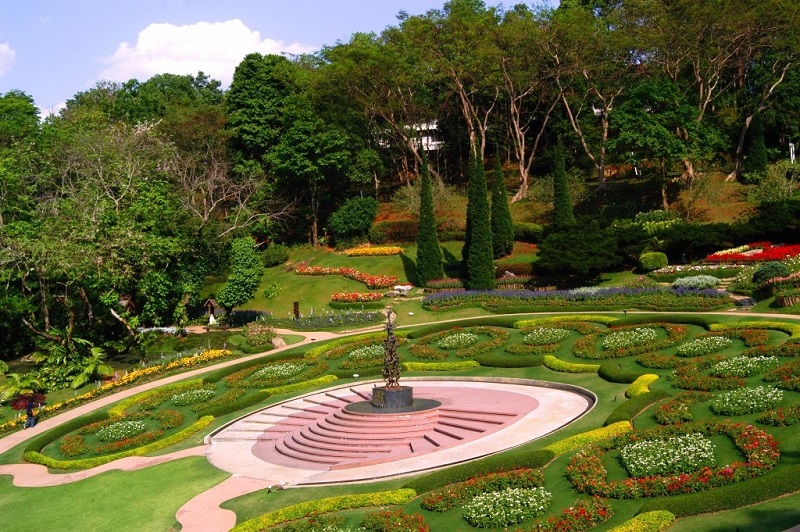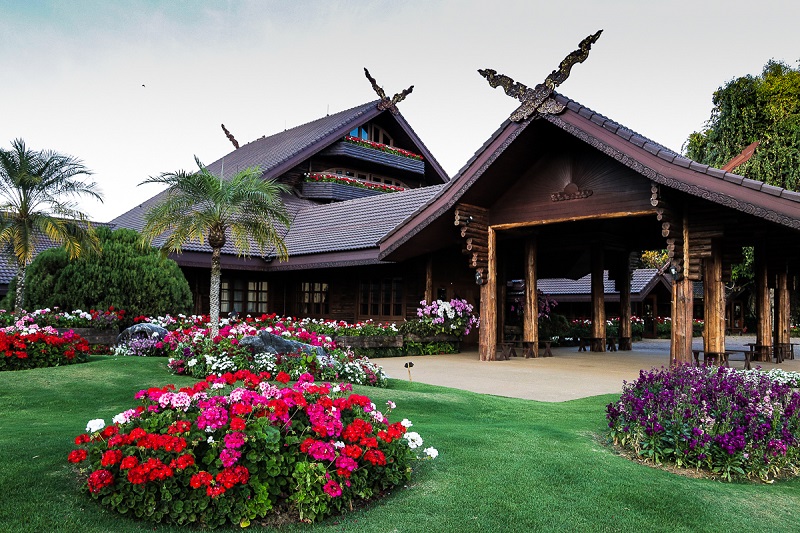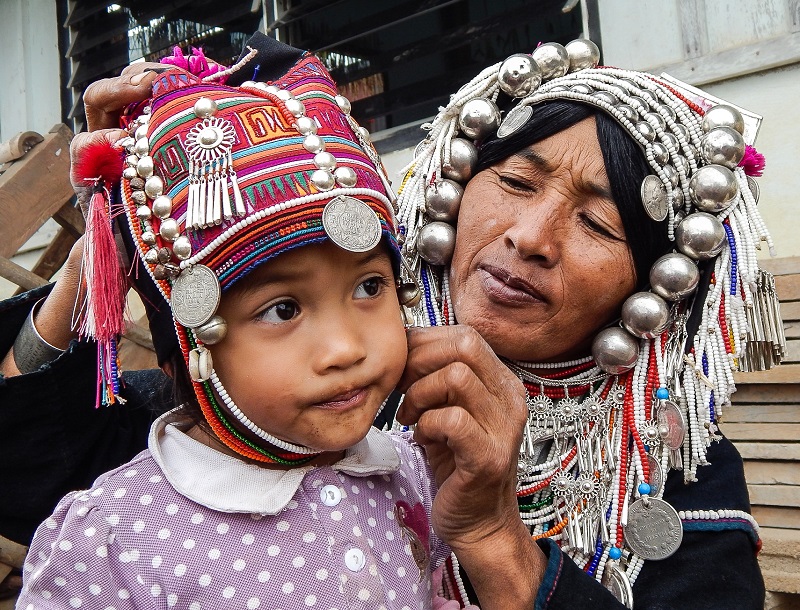Doi Tung
Overview of Doi Tung
Doi Tung is a mountain in the Thai highlands of Mae Fa Luang District, Chiang Rai Province, Thailand. It is located 60 km from the heart of Chiang Rai town, which is a perfect escape away from civilization. Coming here, you can enjoy the slow-paced life by visiting the exotic tribal villages, paying a visit to tea plantation…For some thrills, try Doi Tung treetop walk which is game with walking on a 300-meter suspension bridge. Doi Tung is a mountain paradise, so do miss it.
1. Things to do in Doi Tung
- Mae Fah Luang Garden & Doi Tung Tree Top Walk
If you love nature, floral meadows, and also looking for some adventure, Mae Fah Luang Garden & Doi Tung Tree Top Walk should be in your list of must-see places in Chiang Rai. Spanning over 10 acres of land, Mae Fah Luang Garden is a popular tourist attraction in Chiang Rai where you can see natural beauty, hundred different kinds of flora from romantic red salvias, and cheery yellow daisies to the rare lady’s slipper orchids. Doi Tung Treetop walk is a thrilling game where you pay a small fee of 150 baht for 300 meters long walk on the suspension bridge. On the bridge, you can see the stunning view of tall mountains, verdant forests, hear the birds singing; and enjoy the fresh air.

Mae Fah Luang Garde, Doi Tung

Doi Tung Tree Top Walk
- Choui Fong Tea Plantation
Choui Fong Tea Plantation is one of the biggest tea producers in the city of Chiang Rai, situated at the top of a hill with a bird’s eye view of the surrounding fields. Choui Fong grows some of the finest quality teas in the country. The plantation is beautiful and unspoiled and filled with neatly manicured tea scrubs set on picturesque terraced hill slopes. There is even a tea shop and restaurant which offers expansive views over the rolling hills and mountains. The restaurant is modern, clean, and intricately designed with a terrace and huge windows overlooking beautiful scenery. If you are not a tea lover, there’s also a selection of coffee on the menu. Tourists often stop here for 30 minutes or a few hours for sightseeing or taking pictures.

Choui Fong Tea plantation, Doi Tung
- Doi Tung Royal Villa
Doi Tung Royal Villa was the mansion home of Her Late Royal Highness Princess Srinakarindra, the Princess Mother built in the Lanna and Swiss architectural styles. It was built from the Princess Mother’s private funds on the concept that the local hill tribes would be honored by the royal presence and will stop their opium cultivation. The exterior of the Doi Tung Royal Villa was made of concrete and decorated with wood slabs, cut from discarded teak trees. The interior is simply designed, but exudes elegance, reflecting the nature of the possessor of the mansion.

Doi Tung royal villa
- Akha Tribal Village
Doi Tung is home to Akha Tribes which is an indigenous hill tribe living in small villages high up in the mountains. Now there are around 80,000 Akha living in Chiang Rai and Chiang Mai. This tribe has a long and rich history dated back to the early 20th century when they traveled from China to Southeast Asia due to a civil war in Burma. The iconic symbol and identity of the Akha women are the headdress which is elaborate and striking. Akha woman could even bear the weight of the headdress; it was decorated with many things such as silver coins and balls. The Akha women are skillful at embroidery, from colorful hand-woven pouches to braided bracelets. Visiting the Akha people here will be a wonderful experience for your trip to Thailand.


Akha people in Doi Tung
2. How to get there
- From Chiang Rai
By taxi: It costs from 23 USD to 28 USD and takes about 1 hour.
By bus: It takes about 1 and a half-hour by taxi, and it costs from 14USD to 17USD
- From Chiang Mai
By Bus: It takes around 6 hours, and it costs from 16USD to 21USD
By taxi: It takes around 4 and a half-hour, and costs from 30USD to 41USD
